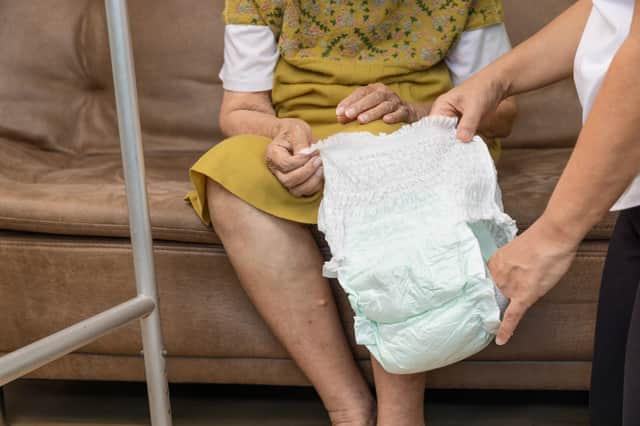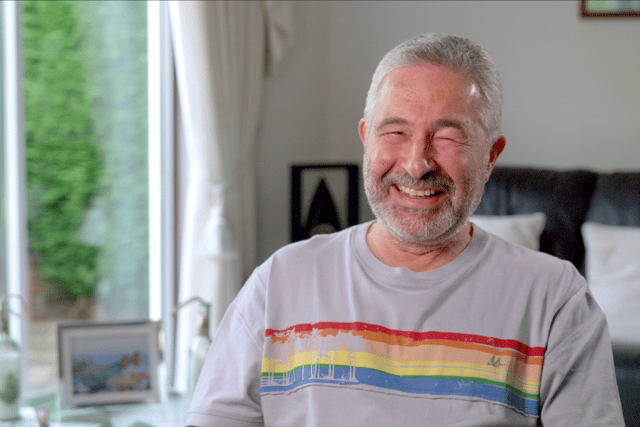Substandard incontinence care costs NHS more than half a billion pounds per year


There are currently 164,833 people in residential care and nursing homes who experience difficulty with bladder or bowel control.
But an eight-week value-based procurement pilot carried out at two care homes in Lincolnshire has exposed both the cost, and indignity, of cheap, ill-fitting pads and protection.
Advertisement
Hide AdAdvertisement
Hide AdThe study, carried out by hygiene and health company Essity in partnership with the NHS, investigated the impact of providing more clinically appropriate products in lieu of those chosen on unit cost alone.
It found the average patient wearing the current product offering was likely to experience up to 2.5 leaks a day, needing staff time to change, and required six pads per day – a total cost of £15.33.
By comparison, just four of the more expensive pads were needed and there were an average of 0.5 leaks per person, with a cost of only £6.68.
It also recorded a 75 per cent reduction in leakages requiring bedding or clothing to be washed, and an 18 per cent increase in patients being able to self-toilet.
Advertisement
Hide AdAdvertisement
Hide AdEssity is now calling for the government to conduct an urgent review of continence care procurement practices in the NHS.
It also wants to work with the NHS and industry partners to support the implementation of value-based procurement – an approach that takes the total cost of care into consideration and puts the benefit to the patient first, rather than simply procuring based on the cost per product.
In addition, Essity surveyed 500 medical professionals who look after incontinence patients, which revealed 67 per cent find it particularly difficult that the person they care for might be deeply distressed or ashamed of their situation.
While 71 per cent admit they are sometimes supporting patients who might be able to be independent, were the quality and fit of their pads or pants better.
Advertisement
Hide AdAdvertisement
Hide AdAnd 78 per cent can find themselves treating patients who would self-manage better with more education and information.
In addition, six in 10 (59 per cent) have frustrations with the procurement of incontinence pads via the NHS, with poor fit being the main concern (62 per cent), while 37 per cent said they’re not always fit for purpose.
These nursing professionals want the determining factors for the procurement of products to be addressed – with 67 per cent saying the extent of the incontinence needs to be the number one consideration.
This should be followed by the patient’s physical (62 per cent) and mental (49 per cent) health.
Advertisement
Hide AdAdvertisement
Hide AdOther factors used to work out what products are used to treat a patient with incontinence would ideally be whether carers are needed to assist with a change (45 per cent), the patient’s dexterity (35 per cent) and gender (31 per cent).
Gareth Lucy, spokesman for Essity, said: “There is no such thing as one size fits all when it comes to incontinence care.
“We are appealing to the government to look beyond simply the cost per unit of the products they procure for the NHS, and instead look at the specific needs of the patient first and consider the total cost of their care.
“Choosing the cheapest incontinence product might seem like a cost saving, but it’s a false economy.
Advertisement
Hide AdAdvertisement
Hide Ad“A lower quality incontinence product is more likely to leak, needs changing more often, and therefore increases the use of related products such as latex gloves, aprons, wipes, and the cost of cleaning bed linen and clothing.
“In addition, more regular changing and cleaning requires time for healthcare professionals and impacts the dignity for the patient.”


A second study was carried out, via OnePoll, polling 1,000 adults with relatives in a care home or hospital setting – of these, just under half said their relative is incontinent.
For those affected, 45 per cent need medical assistance from a professional or carer to manage their incontinence for them, and this can be anything up to five times a day.
Advertisement
Hide AdAdvertisement
Hide AdMore than nine in 10 relatives with incontinence wear some kind of protection, but problems cited include comfort (42 per cent), the fact it needs changing so regularly (42 per cent) and leaks (41 per cent).
Understandably, this leads to 45 per cent of those questioned feeling their relative has a poor quality of life as a result, and 42 per cent feel anxious about their overall wellbeing.
Independent dementia nurse consultant Zena Aldridge, age 51, from Norwich, regularly supports people living with dementia and their family carers who are affected by incontinence.
She said: “The NHS and social care tend to adopt a pad culture approach, this means some other strategies that help promote continence aren’t offered.
Advertisement
Hide AdAdvertisement
Hide Ad“Assessments need to be offered to highlight effective strategies for managing or reducing incontinence.
“People with dementia need a full assessment to see which product might be most appropriate for them.
"For a lot of people there’s this pad culture, where incontinence is seen as a symptom of dementia rather than looking for underlying problems that might be contributing to it.
“Containment appears to be the priority. For me there’s a balance between maintaining independence, autonomy and dignity.”
Advertisement
Hide AdAdvertisement
Hide AdTracy Evans, clinical team leader for the Continence Service, Southern Health NHS Foundation Trust, said: “Provision of products without assessments could result in patient harm.
"Without clinical influence in tendering, the focus becomes on cost per product rather than quality and patients’ needs.
“In some areas of procurement, there is a belief that clinical input is not required when selecting products.”
Comment Guidelines
National World encourages reader discussion on our stories. User feedback, insights and back-and-forth exchanges add a rich layer of context to reporting. Please review our Community Guidelines before commenting.